Are you looking for an all-natural sleep solution that can be made from the comfort of your own home? Read more about cannabinol, known as CBN, discover why this cannabinoid has earned the nickname ‘the sleep cannabinoid,’ and learn how to make your own CBN oil at home following a simple oil infusion process.
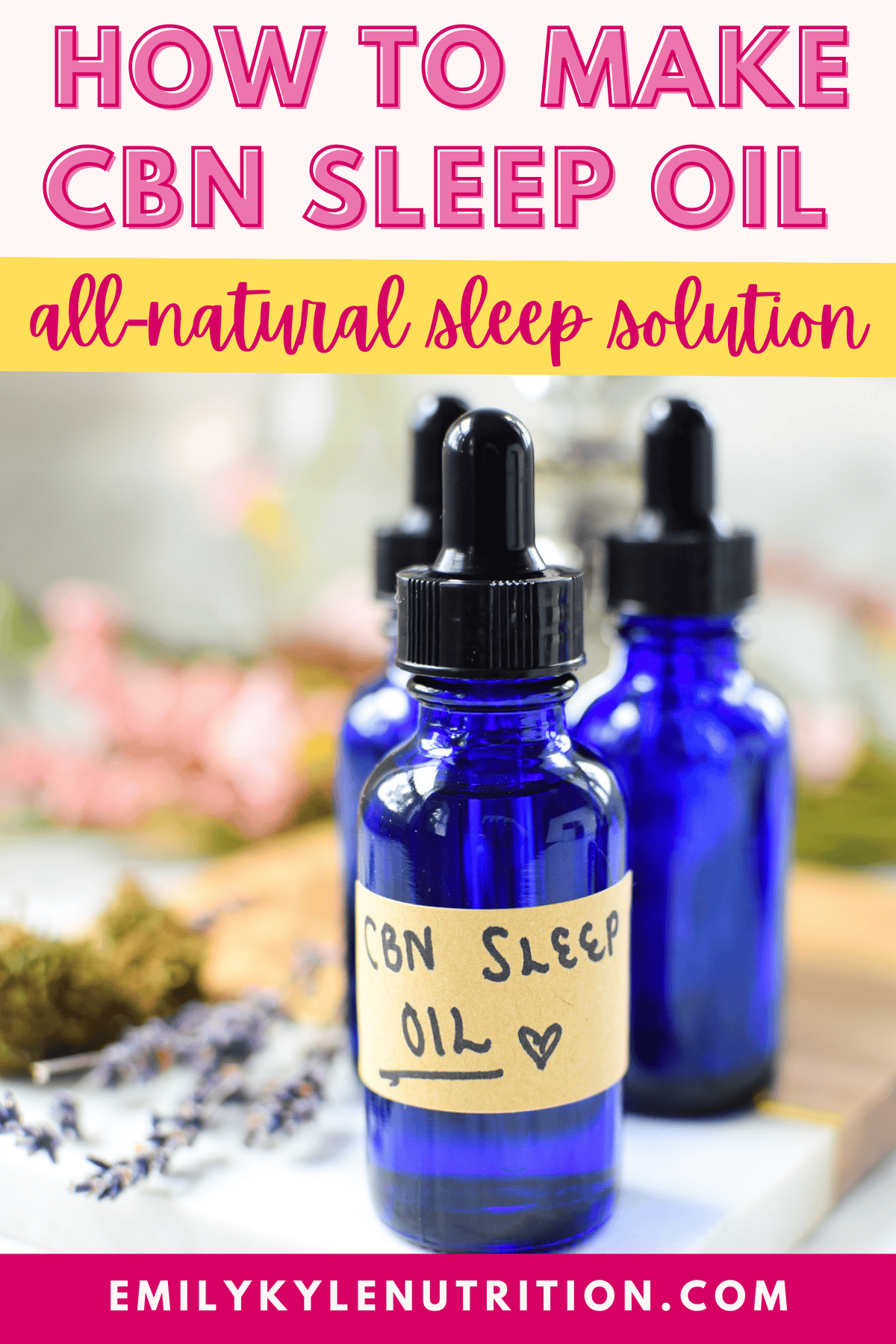
Table of Contents
Article Features
- Made with two simple ingredients: THC flower & oil
- Perfect if you want a homemade alternative to sleep medications
- Want to skip the hard work? Shop with me and have my premium CBN Sleep Oil delivered directly to your door. Now shipping across the United States!
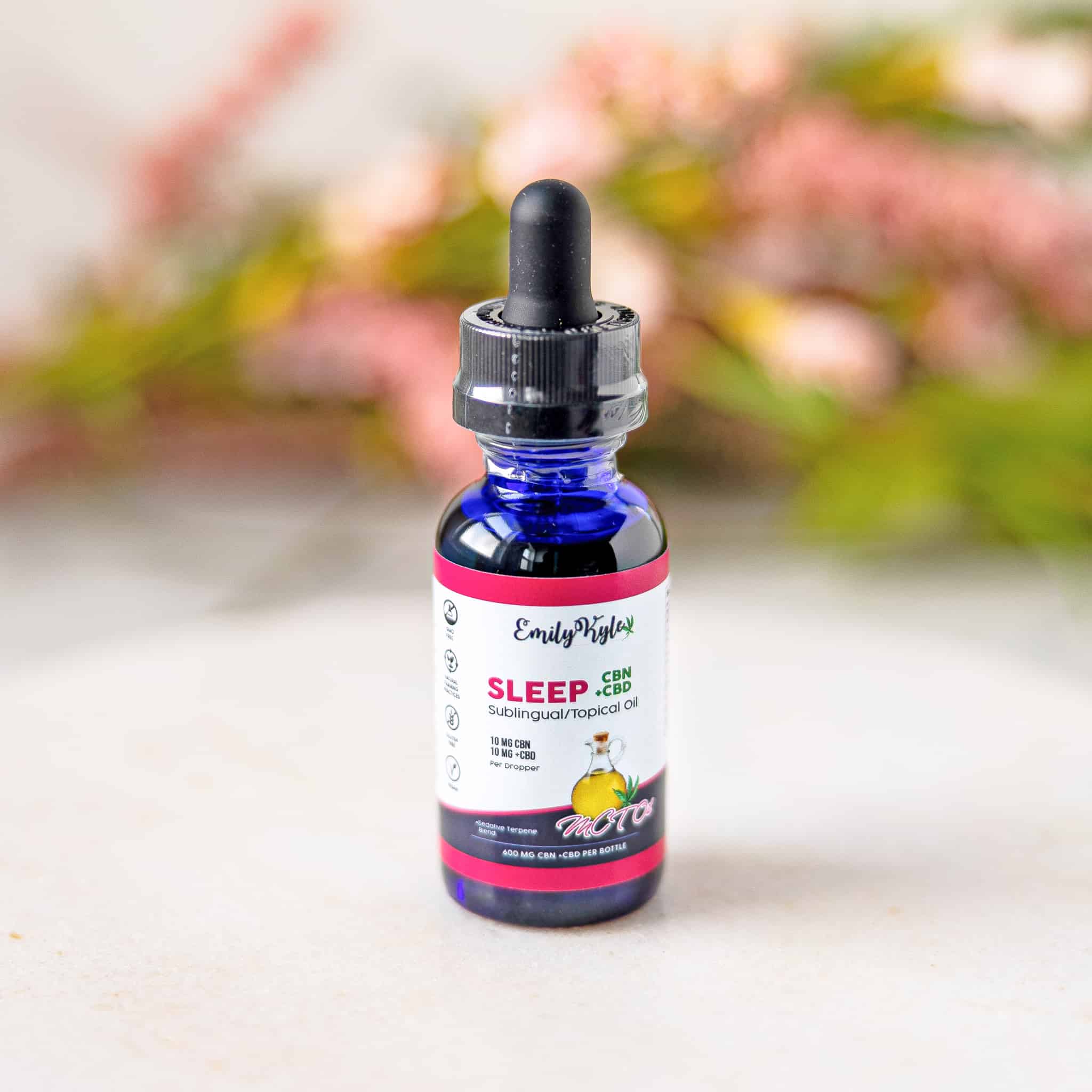
Why You Will Love This Recipe
The cannabis plant contains more than 100 cannabinoids, which give the plant its powerful properties.
While you usually hear about CBD and THC, the minor cannabinoid called cannabinol, or CBN, has been getting a lot of attention due in my Well With Cannabis Community to its unique sleep effects.
But what is CBN, why is it nicknamed the sleep cannabinoid, and is it right for you?
In this guide, we will quickly review CBN’s potential benefits, and I will show you how to use your THC-dominant flower to make your own CBN oil at home.
What You’ll Need

- THCA-dominant cannabis flower – To make a CBN oil at home, you must start with a cannabis flower that has THCA or CBNA already present. Aged cannabis is a great option, too.
- Lecithin, optional: If you’re new to working with lecithin, you can learn more about adding lecithin to edibles here. If needed, you can purchase liquid lecithin or powdered lecithin. This ingredient is optional and used for bioavailability purposes.
- Carrier oil of choice– There are many oil options to choose from. Unsure what to pick? Check out my guide to understanding different types of cannabis oils here.
Note: A complete list of ingredients with amounts and printable instructions is located in the recipe card below.
The Step-by-Step Process
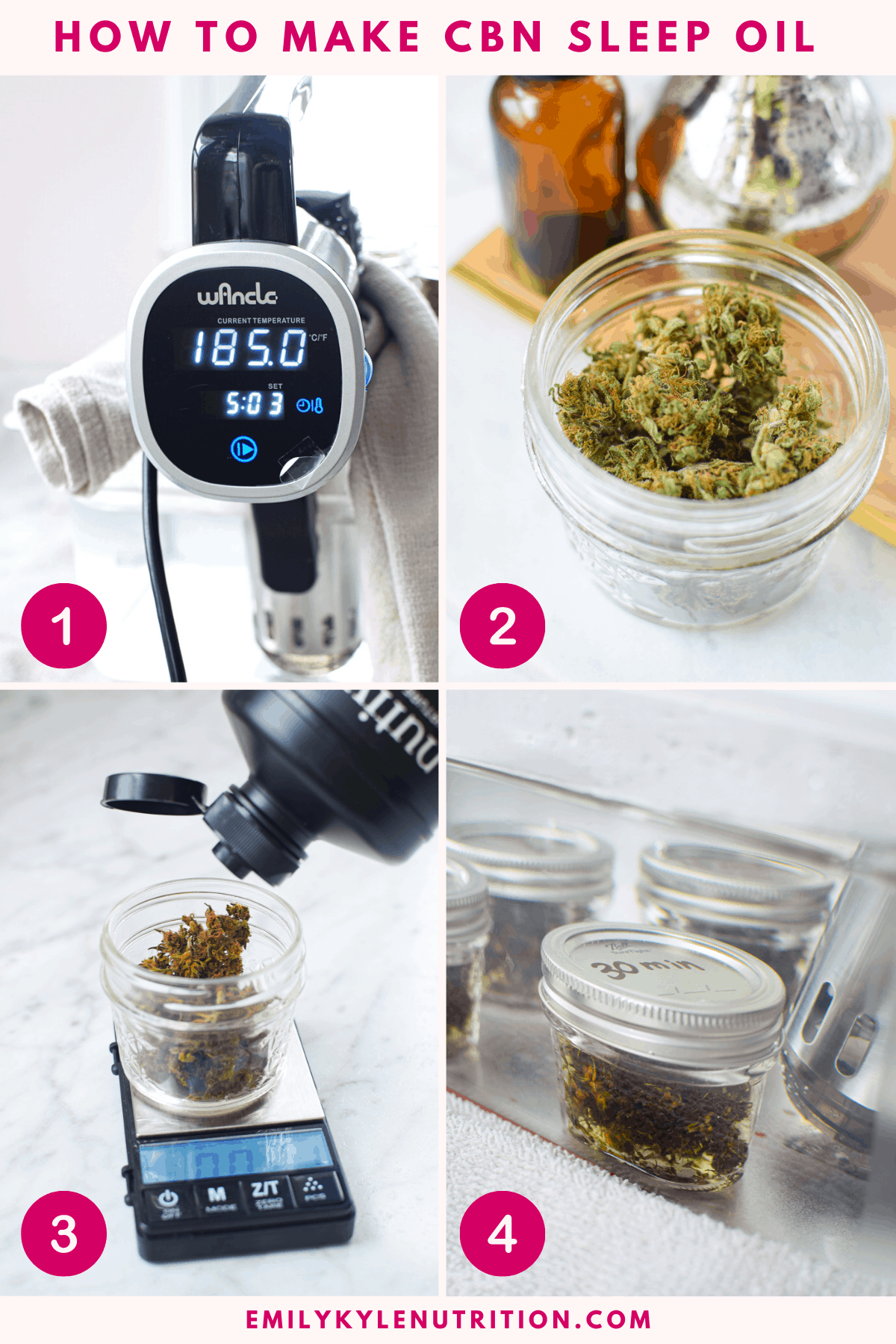
- Step 1 – The goal is to create a water bath that stays at approximately 180-190° F for the cooking process. The printable instructions in the recipe card below are for using a crockpot to create the water bath, but you can use anything you want, like an Instant Pot or sous-vide.
- Step 2 – While the water bath is heating in the crockpot, measure and decarb the THC flower. To decarb in the oven, bake the material at 240°F for 180 minutes. See more information on how to decarb for CBN below.
- Step 3 – Add the decarbed cannabis flower and MCT oil to the mason jar you plan to use. If you plan on using sunflower lecithin, add it now.
- Step 4 – Carefully place the jar into the water bath. Then, place the lid on the crockpot and leave it alone to infuse for 4 hours. After 4 hours, remove the jars from the hot water and allow them to cool.
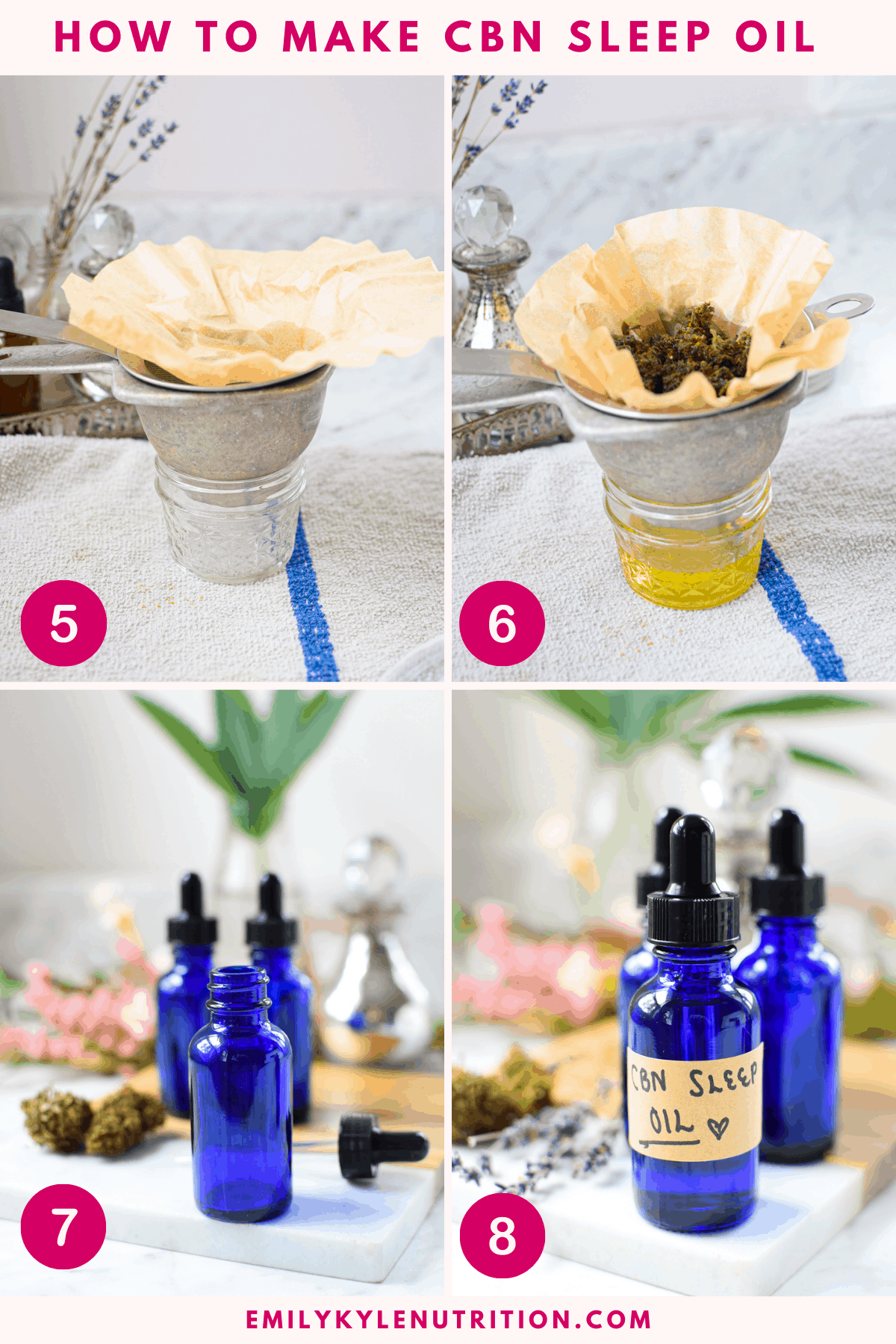
- Step 5 – Set up a straining station to separate the plant matter from the oil using a paper filter and funnel, cheesecloth, French press, or a simple coffee filter.
- Step 6 – Once cool enough to handle, strain the prepared oil with your method of choice. You can save the leftover cannabis pulp for future recipes.
- Step 7 – Return the prepared CBN oil to whatever jar you want to store it in; I use a small .
- Step 8 – Store the prepared CBN oil in a cool, dry place. It will last longer in the refrigerator and even longer in the freezer.
Note: Complete step-by-step printable instructions are located in the recipe card below.
Storage Instructions
Store your prepared CBN oil in a cool, dry place. A dark cabinet is good.
It will last longer if stored in the refrigerator and even longer if stored in the freezer.
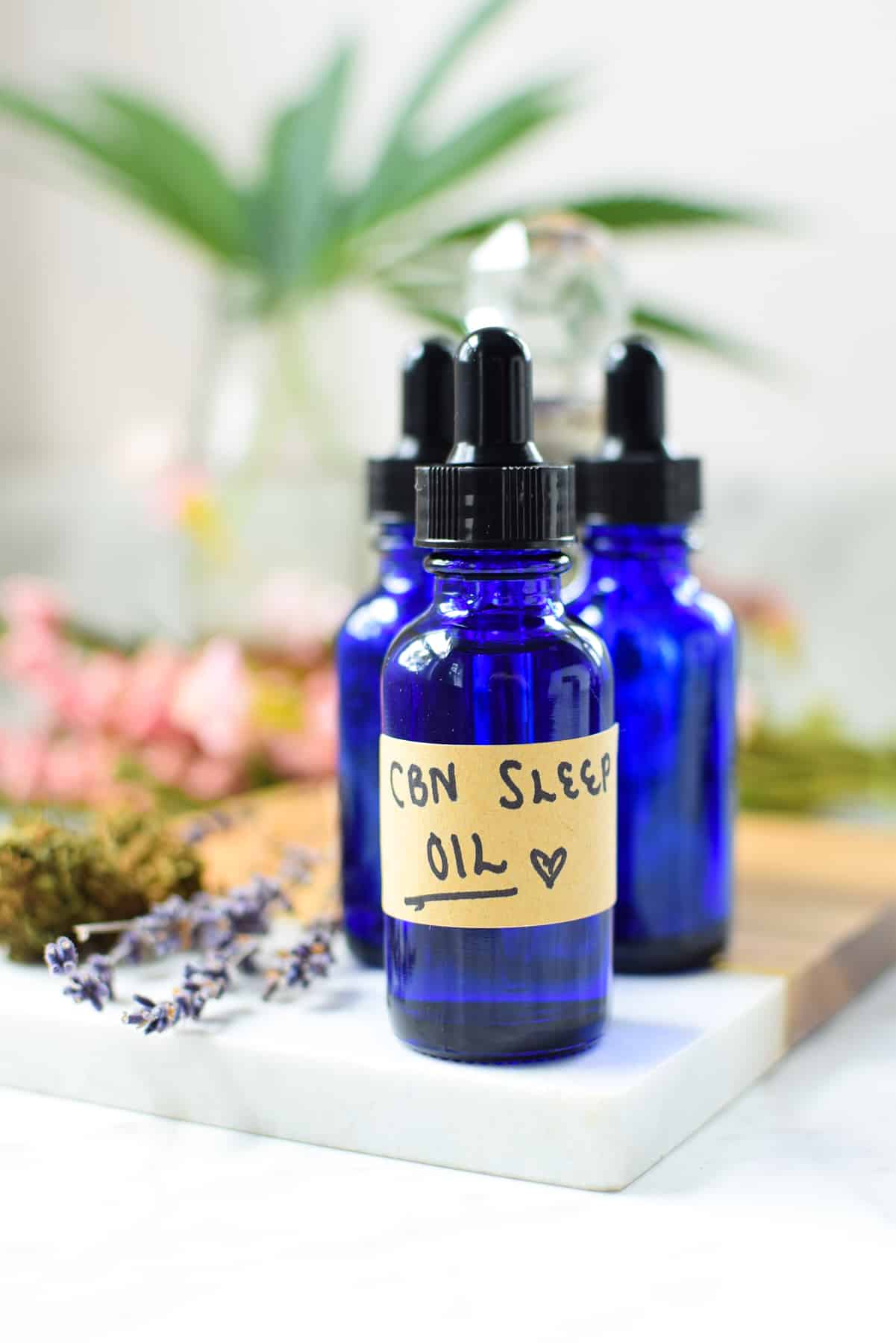
About CBN
Unlike CBD or THC, CBN is typically found in cannabis in trace quantities – also known as a minor cannabinoid.
CBN is what you might call the product of patience, slowly developing as THC transforms over time.
With a little nudge from UV light, heat, or just plain old neglect, THC starts a transformation that leads to the creation of CBN.
CBN’s claim to fame lies in its potential to produce sedative effects, offering a natural bridge to restful sleep and relaxation.
Anecdotally, members of my cannabis community often attribute CBN with the power to soothe insomnia and anxiety.
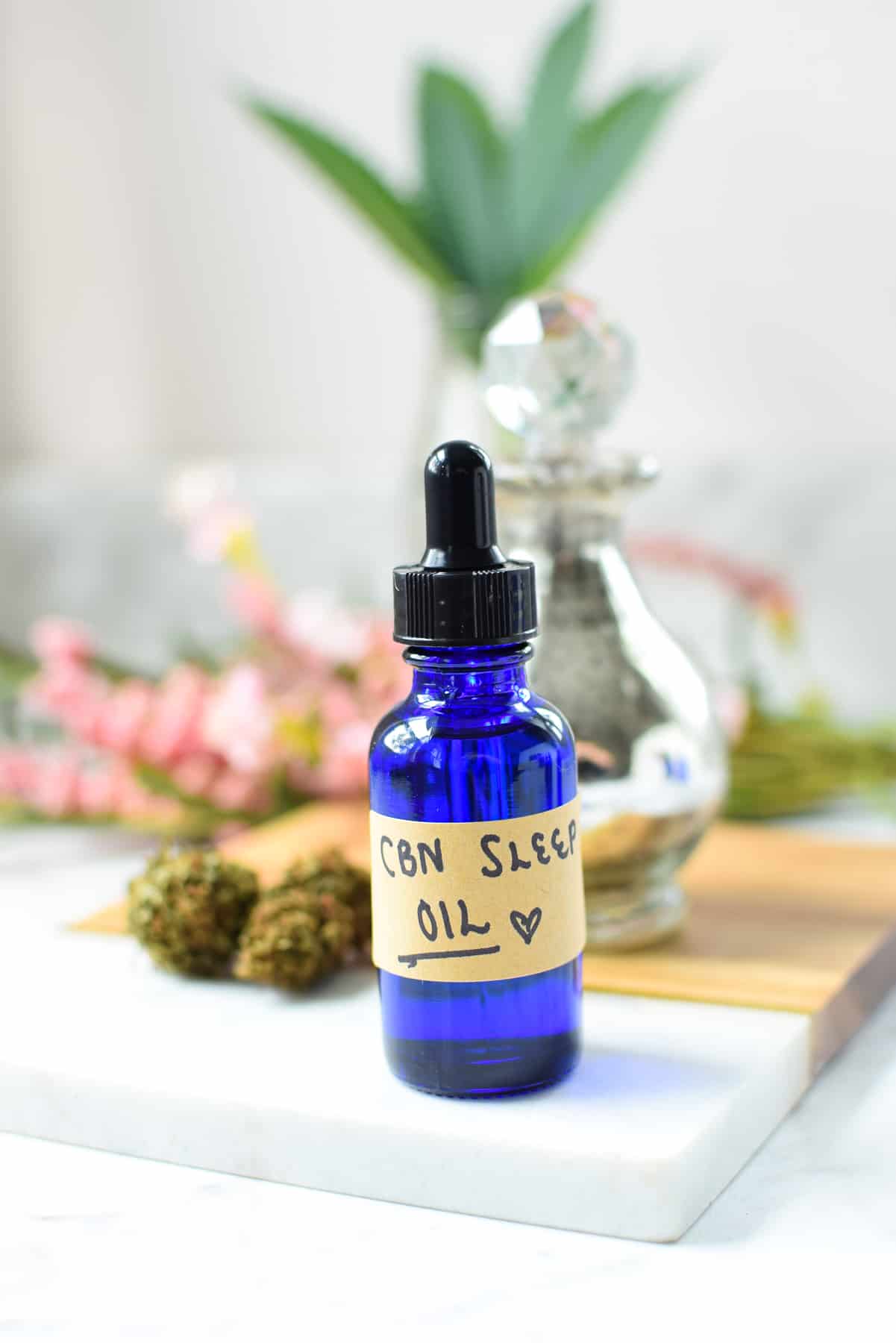
How to Create CBN at Home
Fortunately for us, CBN can be achieved through the degradation of THC, which can be done in a home kitchen through the process of decarboxylation.
This means if you have old cannabis or have exposed the THC to oxygen and/or heat, you likely already have plant material that has developed a higher concentration of CBN.
If you want to try to make your own CBN products at home, you will want to start with THC-dominant flowers.
Remember, the more THC available, the more opportunity for THC to CBN conversion.
The traditional decarboxylation recommendation for THC to CBN conversion is to decarb at 240°F for 180 minutes.
*Please note: I do not have lab tests to confirm these times and temperatures for CBN formation.
These recommendations are based on reports of what works for consumers inside my Well With Cannabis Community.
Follow this process at your own discretion, and consider starting with a small batch to start.
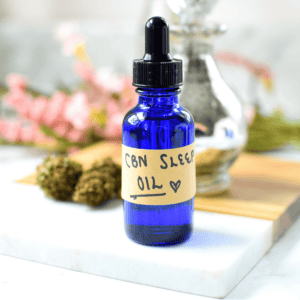
Small-Batch CBN Sleep Oil
Equipment
- Blue tincture dropper bottle
Ingredients
- 2 ounces MCT oil
- 3.5 grams THC cannabis flower
- 1/4 teaspoon liquid sunflower lecithin optional
Instructions
- Lay a clean tea towel down on the bottom of the crockpot. This will create a buffer between your mason jars and the crockpot, potentially preventing any jar from moving or cracking during cooking.
- Fill your crockpot with enough warm to hot water to cover the top of the mason jars you plan on using by an inch to create a water bath.
- While the water bath is heating in the crockpot, measure and decarb the cannabis flower in the oven at 240° F for 180 minutes. Click here for a full cannabis decarboxylation tutorial, if needed.
- If you plan on using lecithin, add it to the mason jars now.
- Evenly divide the decarbed flower between the MCT oil-filled jars. Stir well. Wipe the rim of the jars with a clean paper towel and place the lid on. Tighten the metal ring to finger-tip tightness, it does not have to be tightened all the way. Do not tighten too tightly.
- Once the water bath reaches a temperature of 185° F, carefully place the jars into the water bath.
- Place the lid on the crockpot and leave it alone to infuse for 4 hours.
- After 4 hours, carefully remove the lid, followed by the jars from the hot water. Set them aside to cool.
- Save the leftover cannabis pulp for use in future recipes. Then, return the prepared cannabis oil to whatever jar you want to store it in. We use a small amber tincture jar.
- Store the prepared CBN oil in a cool, dry place. It will last longer if stored in the refrigerator and even longer if stored in the freezer.
Notes
Nutrition
Frequently Asked Questions
You can choose whatever carrier oil you desire to make your infused oil, it does not need to be MCT oil. You can experiment with the following cooking oils: coconut oil, olive oil, avocado oil, sunflower seed oil, grapeseed oil, canola oil, soybean oil, and safflower oil.
In theory, using lecithin will make valuable cannabinoids like CBD, THC, or CBN more bioavailable or ready for use by the body. You will still have a great infused CBN oil if you don’t use lecithin; this recipe is not a make-or-break ingredient. If you use lecithin, I recommend using a liquid lecithin option rather than a powdered or granulated version, as it will mix in easier.
Store your prepared CBN oil in a cool, dry place. It will last longer if stored in the refrigerator and even longer if stored in the freezer.
More Sleep Resources For You
Articles & How-To Guides
The Ultimate Guide to CBN » For Sleep
Articles & How-To Guides
Cannabis for Sleep: Your Guide to Restful Nights
Shop with Emily
Shop Now: CBN Sleep Oil
Shop with Emily
Shop Now: CBN Sleep Gummies
Shop with Emily


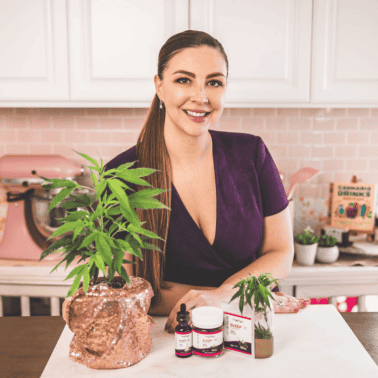
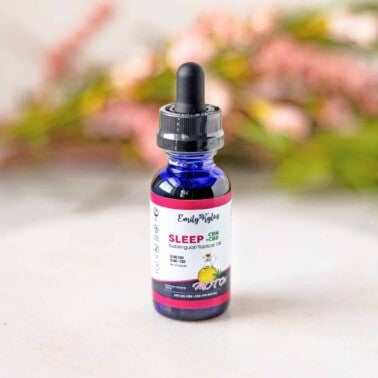
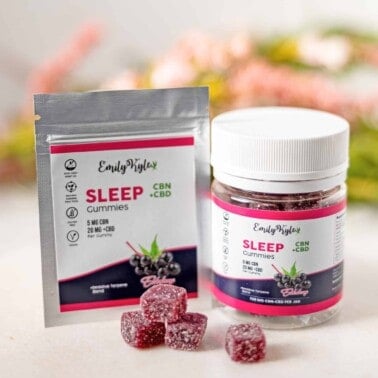










I made this and sent it off for lab testing and it produced no detectable CBN.
I did two batches: one with a standard 40 minute decarb and one with the full 3 hour decarb described here.
The longer decarb fully converted all the CBDA to CBD whereas the shorter had CBDA left still, but no CBN.
Hi, Nathan. Was there THC or THCA present in the material you started with? This is what is needed for CBN conversion, not CBDA or CBD.
I read old comments here, and saw that about 18 mo ago, you mentioned you might run lab tests to determine the potency of the CBN from this recipe. Have you done this? If so, what were the results? I am well-versed in making THC oil and calculating potency, but now that I’ve made CBN, I’m wondering if there’s a way to calculate potency for this. I watched a video from another source that said that THC to CBN conversion rates vary from one method to another, but I’m thinking it would be unlikely to end up with a higher CBN potency than the THCA you started with? What I mean is, if the same method (decarb/water bath) for making THC oil yielded 20mg/ml (for the same amount of flower/oil), wouldn’t the CBN potency be that or less? However, not having my own lab, I’m still left wondering. What did you find out? Thanks for your site, it’s great!
Hi there Lisa, thank you so much for your detailed question and for your kind words about the site! 😊 As of now, I have not yet conducted lab tests to determine the potency of CBN from this recipe. However, I completely agree with your reasoning. The conversion rates do indeed vary, and it’s unlikely to end up with a higher CBN potency than the THCA you started with. However, without lab testing, it’s hard to confirm this with certainty. I appreciate your interest and this definitely inspires me to consider running these tests in the future. Thanks again for your engagement and don’t hesitate to reach out with any more questions!
Hi Emily! Love your recipes so much! Quick question, I do happen to have a decent amount of old cannabis laying around and would love to make use of it this way! I’m guessing the decarb time/temp may be different in this case..? Maybe not, but would love your input either way!
Thanks in advance!
Thank you so much for your kind words, Bev! I’m thrilled to hear that you’re enjoying the recipes. As for your question, old cannabis can definitely still be used for making infusions! The decarb time and temperature would generally be the same as for fresher cannabis. However, please note that the potency might be slightly lower due to the age of the cannabis. OR, you may already have more CBN present due to the natural degradation of THC. Remember to store your cannabis properly in a cool, dark place to maintain its potency as much as possible. And as always, feel free to reach out if you have more questions or need further guidance. Happy cooking! 🍴
Hi Emily,
I have been making alcohol-based tinctures, and wondering if, after decarbing for CBN, can I just steep in alcohol as usual and combine with a high-CBD / low THC tincture blend?
Hello David, absolutely, you can! 😊 After decarbing your cannabis for CBN, you can steep it in alcohol as you usually would. Combining this with a high-CBD/low-THC tincture blend should give you a lovely, wide spectrum of beneficial cannabinoids. Keep experimenting and let us know how it turns out for you!
Great article! I used a sous-vide machine (costs about $60) to heat the water (no plastic bags needed). Even though the temperature is not critical, this allows the water to remain exactly at 185F for 4 hours (plus or minus 1 degree)… That way you are 100% sure that you have the proper treatment to get the CBN.
Thank you so much for sharing your experience with using a sous-vide machine for heating water, Lee! It sounds like a fantastic and precise method to ensure you’re getting the right treatment to obtain CBN. I really appreciate you taking the time to read this article and offering such a valuable tip to anyone else reading 😊